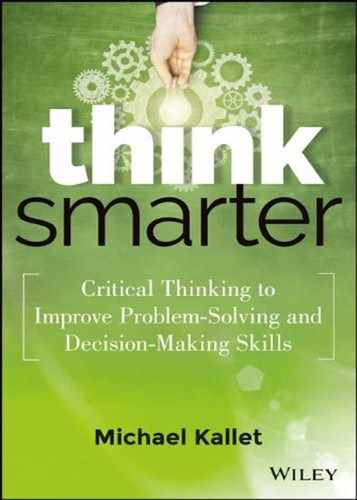Section III Conclusions
You learned in the last section that clarity is of primary importance. If you're not clear, then you're apt to solve the wrong problem. You also learned a variety of tools that help you think critically and get clear. Although it's great to be clear, being clear doesn't pay the bills. The end goal is to solve the problems about which you've gained clarity.
Now it's time to come up with ideas, solutions, and to-dos relative to your headscratcher. Solving problems, looking at situations creatively, and making an ultimate decision about them is all about coming to a conclusion about an action to take regarding your headscratcher.
As such, this section will describe in detail how a particular set of eye-opening tools helps you, me, and everyone else come to conclusions—solutions and to-dos—for our headscratchers. As you will read, everyone arrives at conclusions the same way, but our personalities influence that process. Our beliefs and values play a role in everything we do.
Of course, we don't solve problems in a vacuum; we do so with other people—even if your only objective is to persuade them to embrace your opinion. When you understand conclusions, you can persuade and influence others more easily, simply by using that comprehension. In this section, you'll learn critical thinking skills you can use for persuasion. We'll also cover subjects such as outside-the-box thinking and how to generate creative ideas beyond your own experiences.
We hear all the time how it's bad to assume and how we shouldn't jump to conclusions. Forget about those expressions. They are very misleading and are the complete opposite of what actually benefits us. However, there is a huge distinction between automatic thinking and critical thinking in terms of making assumptions.
If you get one takeaway from this entire section, remember this: it's all about the premise!
In the following chapters, I'll detail the five components of the premise that forms the basis for most conclusions. These five components are facts, observations, experiences, beliefs, and assumptions. Unlike many standalone clarity tools, these five conclusion tools group together. Let's define them first and then put them together with examples and exercises.
